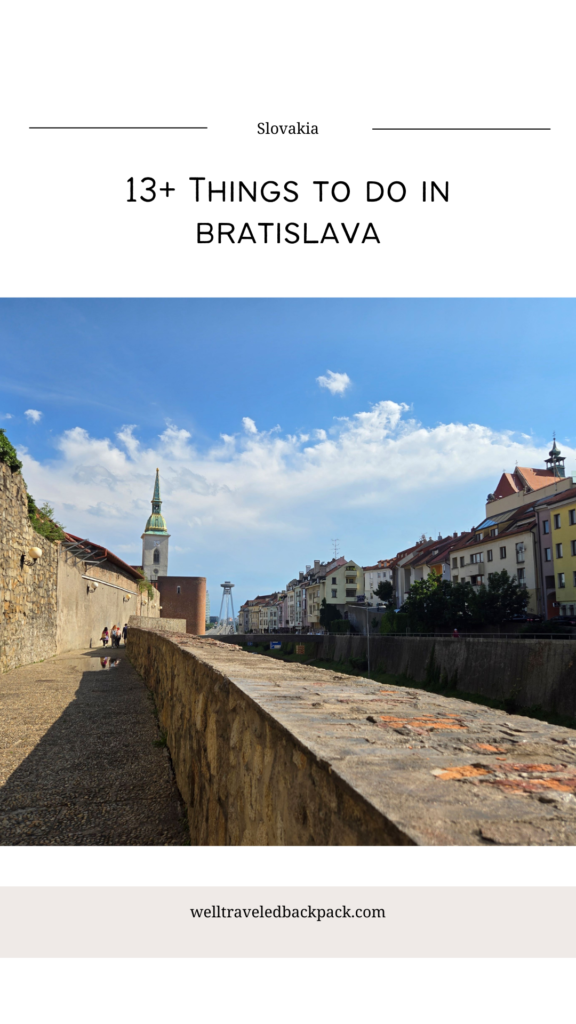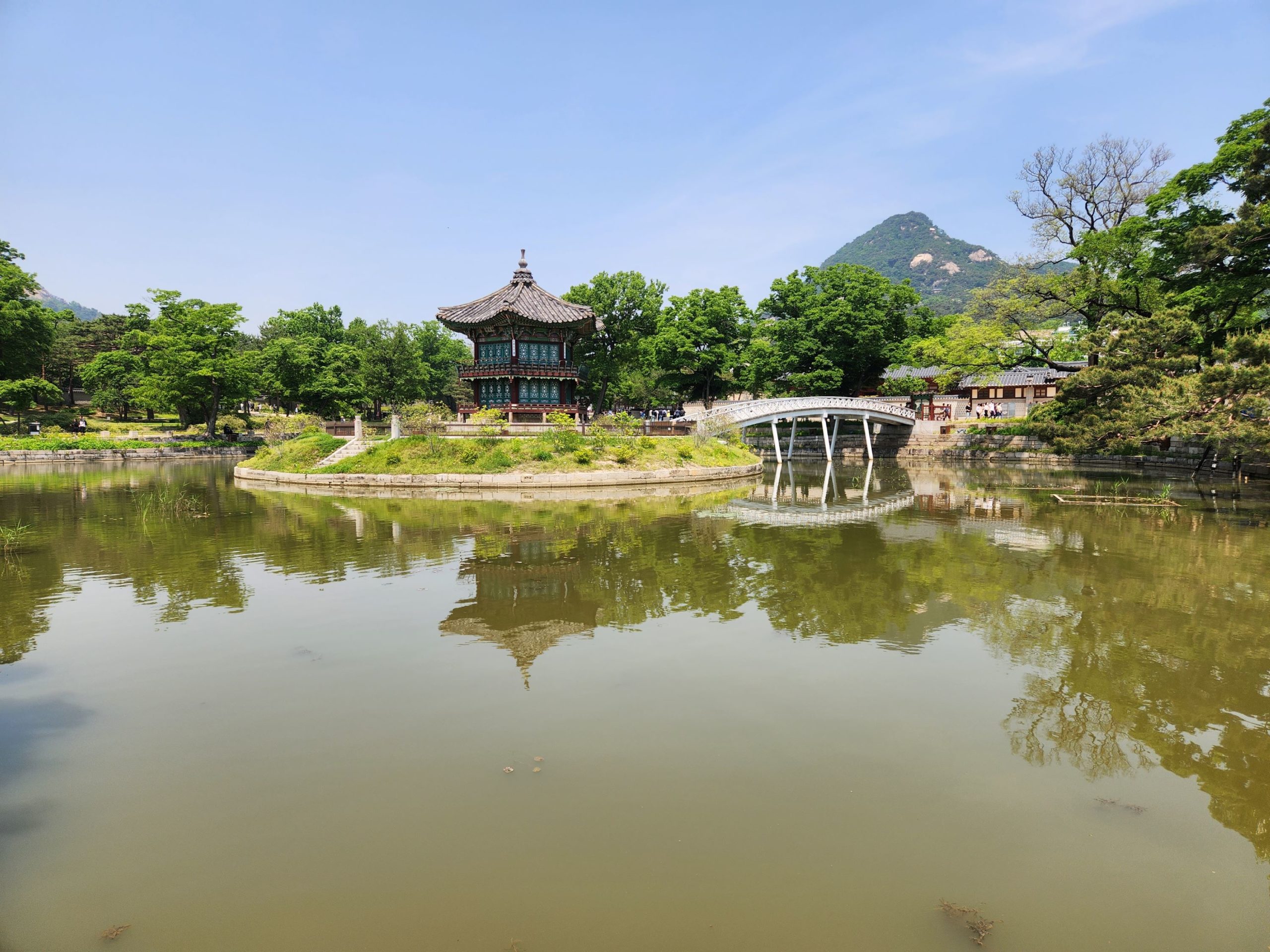Bratislava, Slovakia’s capital, is often overshadowed by its neighbors, tourism powerhouses Vienna and Budapest. Usually, when I hear about someone visiting Bratislava, it’s talked about in a sort of shrug-might-as-well-while-I’m-in-the-neighborhood sort of way. It’s a popular city to pair with Vienna as a day trip as it’s only about 34 miles (~50 km) from the namesake of my favorite Billy Joel song.
I’d been interested in visiting Bratislava ever since going to the Czech capital of Prague in 2017. Though I didn’t get to see it at that time, I was excited to be back in the “neighborhood” and able to visit.
Having now visited, I can say that I think Bratislava – although smaller than other more popular European capitals – is worth more than a day trip. I spent about two days in the city and found plenty of things to do in Bratislava. I could have visited for at least one more day to see some more of the interesting things to do in Bratislava outside of the main tourist areas.
If you’re planning a trip to Central Europe, consider making it part of your itinerary. It is more different from the areas of the countries that surround it than you might expect.
And if you do visit, consider reading more below about things to do in Bratislava – for a day trip or other short visit.
13+ things to do in Bratislava in 2 days:
Visit the Old Town
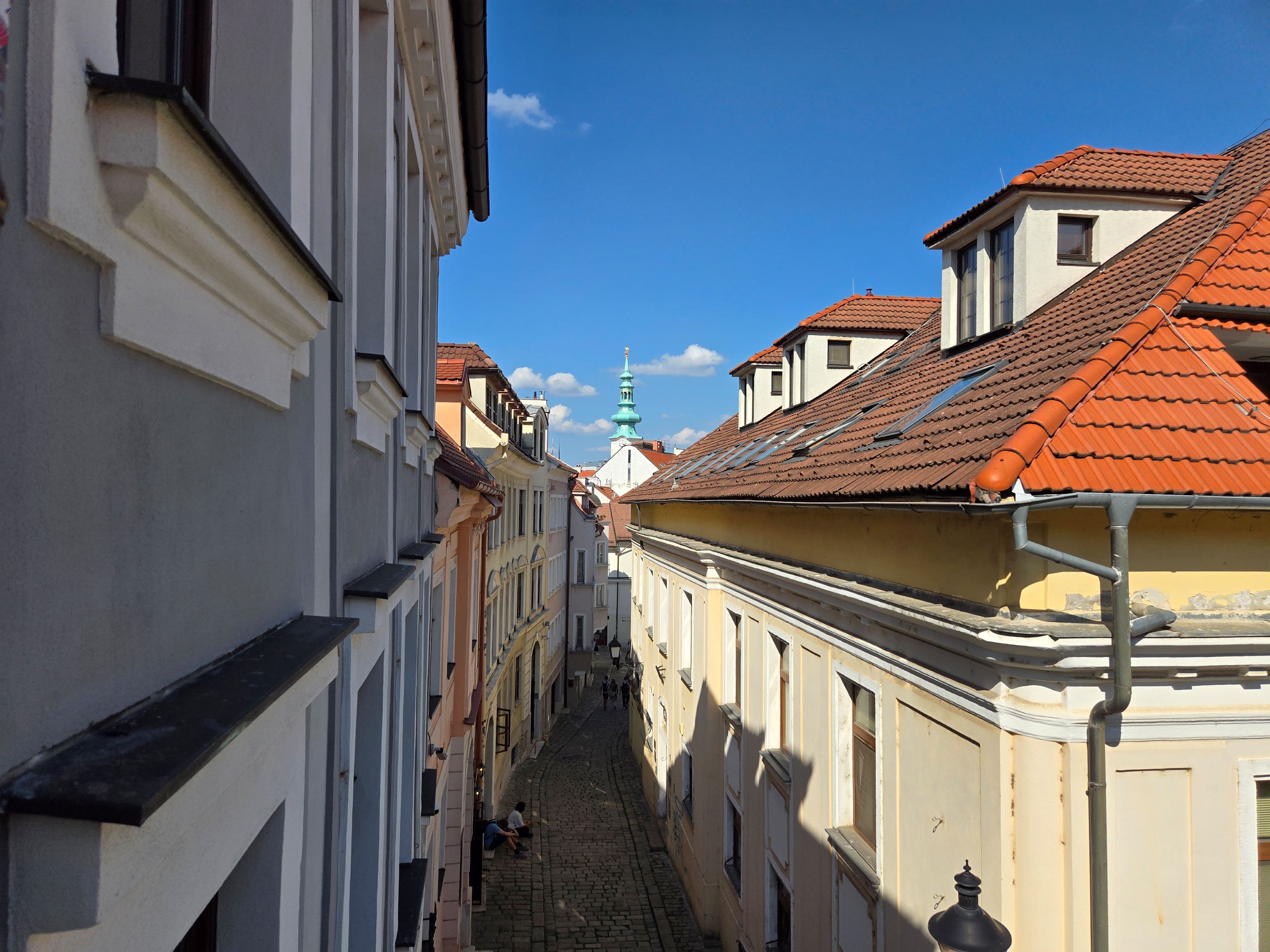
Like many major cities in Europe, one of the first things to do in Bratislava is visit its Old Town. Bratislava’s Old Town is small but charming. It’s the historic center of the city and has existed since the Middle Ages.
If you have only a short time in Bratislava, most of your visit will be in its Old Town. Aside from its many restaurants and bars, it also holds museums, memorials and many famous icons of the city.
Despite the narrowness of Old Town’s streets, and visiting on a weekend on the verge of peak tourist season, the crowds were relatively light. Especially after coming from bustling Prague. The crowds thinned out even more in the hours before and after the day-trippers visited.
This semi-peacefulness is one of the major perks of staying for a couple of nights in a city primarily visited via day trip. It definitely added to the charm of its historic Old Town.
Admire Michael’s Gate
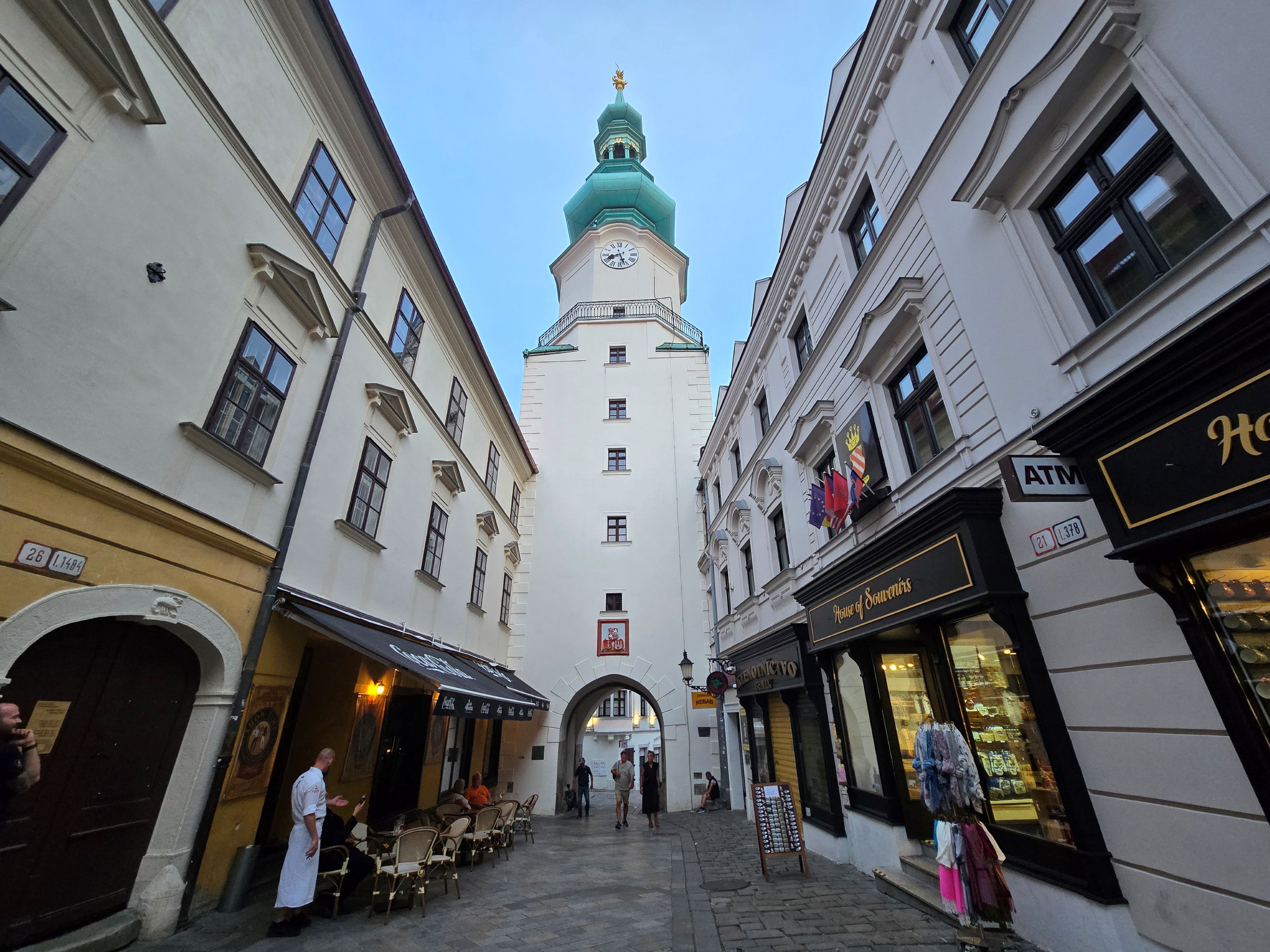
At one of the entrances of Bratislava’s Old Town, you’ll find the iconic Michael’s Gate. Medieval fortifications originally protected the Old Town, and Michael’s Gate is the only city gate still standing from that time period.
The gate was originally built in the 14th century, but underwent renovations in the 18th century. For this reason, its architecture is more of the Baroque style rather than the Middle Ages.
You can’t miss Michael’s Gate when you’re in Old Town. It rises above the city center’s walls with all the importance of a Medieval fortification and a city icon. There are also plaques on it signifying its status as an important historical icon.
Walk the City Walls (for free!)
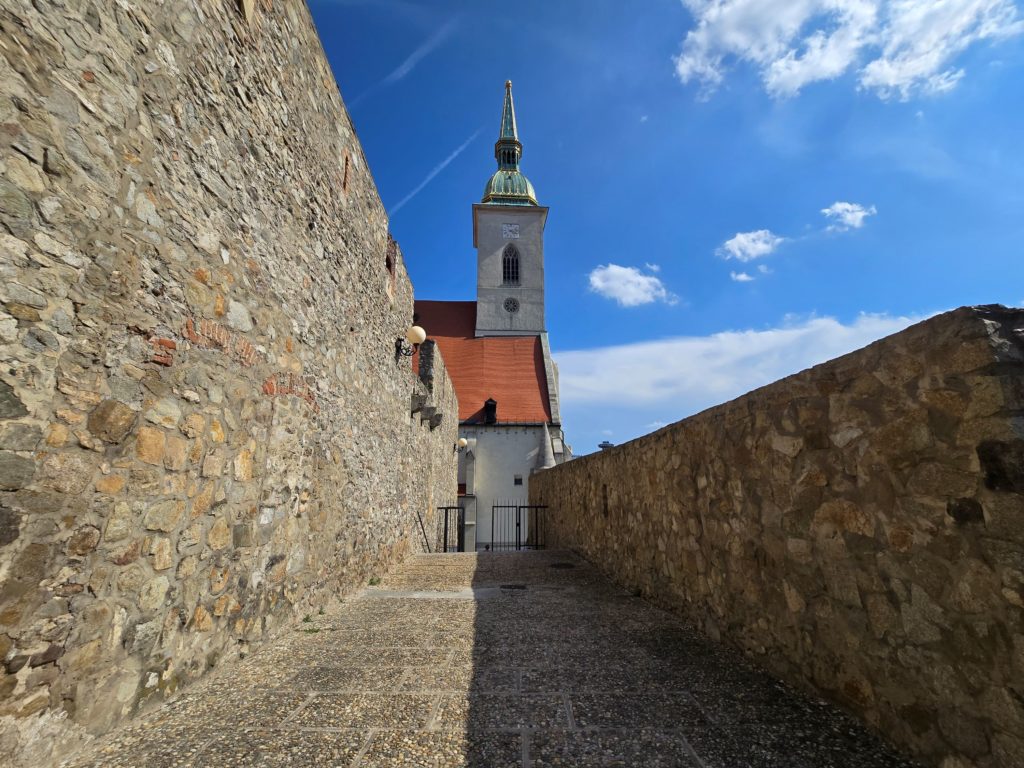
One of the best things to do in a European Old Town is to walk along the old city walls – if possible. I like to meander across the walls, looking out over the city, and pretend I’m in a different century patrolling and protecting the city.
Old Town city wall walks often tend to cost money – the most expensive one I’ve done was in Dubrovnik, Croatia. However, Bratislava’s wall walk is completely free.
While the wall walk doesn’t go around the entire perimeter of the Old Town like the walls in Croatia, they’re still interesting to see. You can see sections of ruins of the walls and read more about their construction and history. From some sections, you can peer out over the Old Town, seeing through its tiny alleyways and over its cobblestone streets. You can also get a good view of Bratislava’s famous UFO Tower.
It takes about 30 minutes or so to walk the walls, read about their history and admire the views.
Visit the Neolog Synagogue Memorial
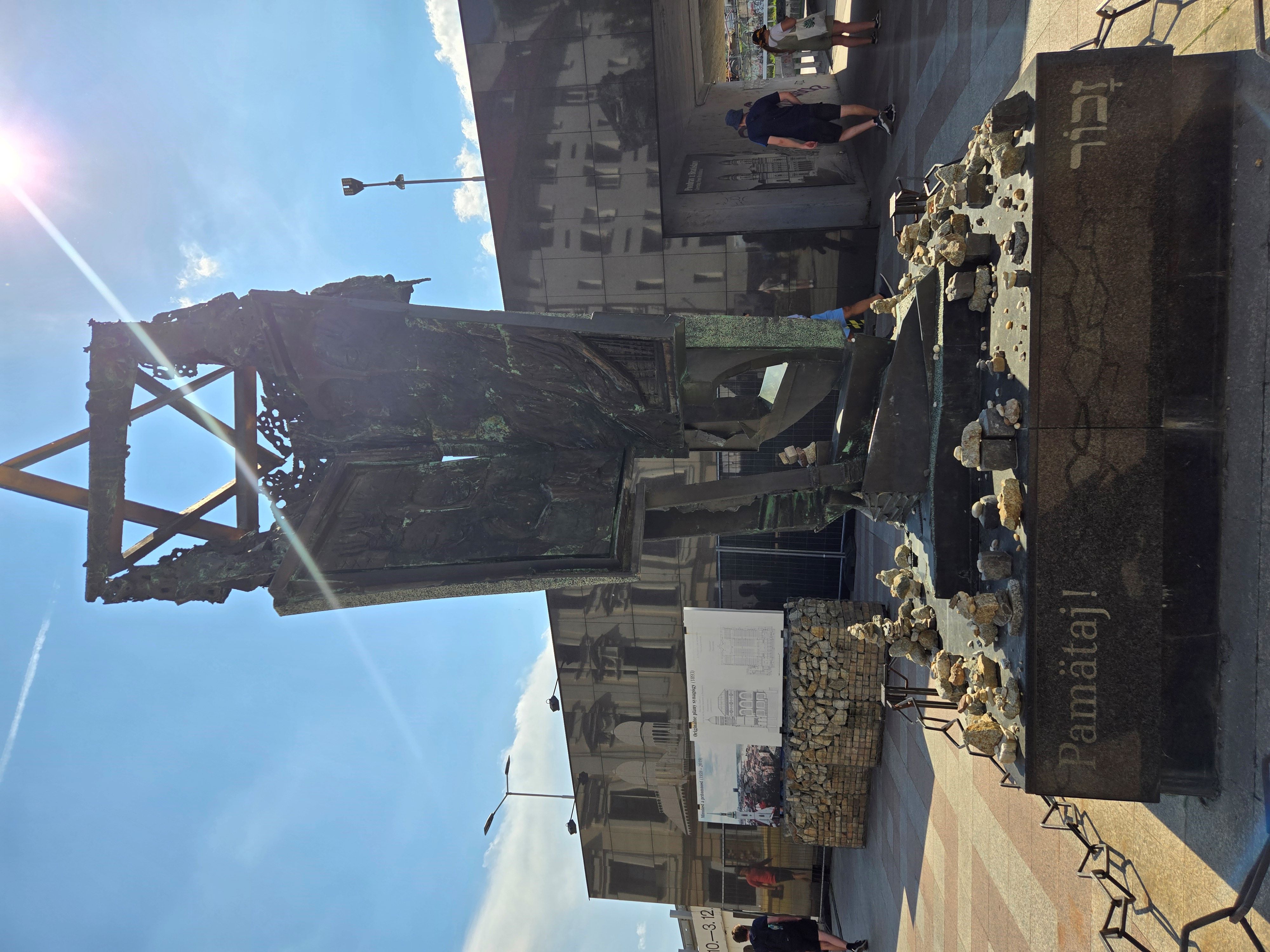
Built in the late 1800s, the Neolog Synagogue was a place of worship for the Neolog Jewish community. They opposed the strict stances of the Orthodox Jewish leaders. It was a symbol of resilience in the community as it survived the sweeping anti-semitism of WWII.
After the war, there were plans to turn the synagogue into a Jewish Museum. That is, until it was destroyed under mysterious circumstances in the 1960s.
Today, you can visit the memorial and read about the synagogue’s construction, history and legacy. The memorial has a monument with the Star of David and panels discussing its history in different languages, as well as images of what the building looked like while it was standing. Some people put white stones on the memorial – the Jewish symbol for mourning and commemoration.
Stroll Along the Danube River
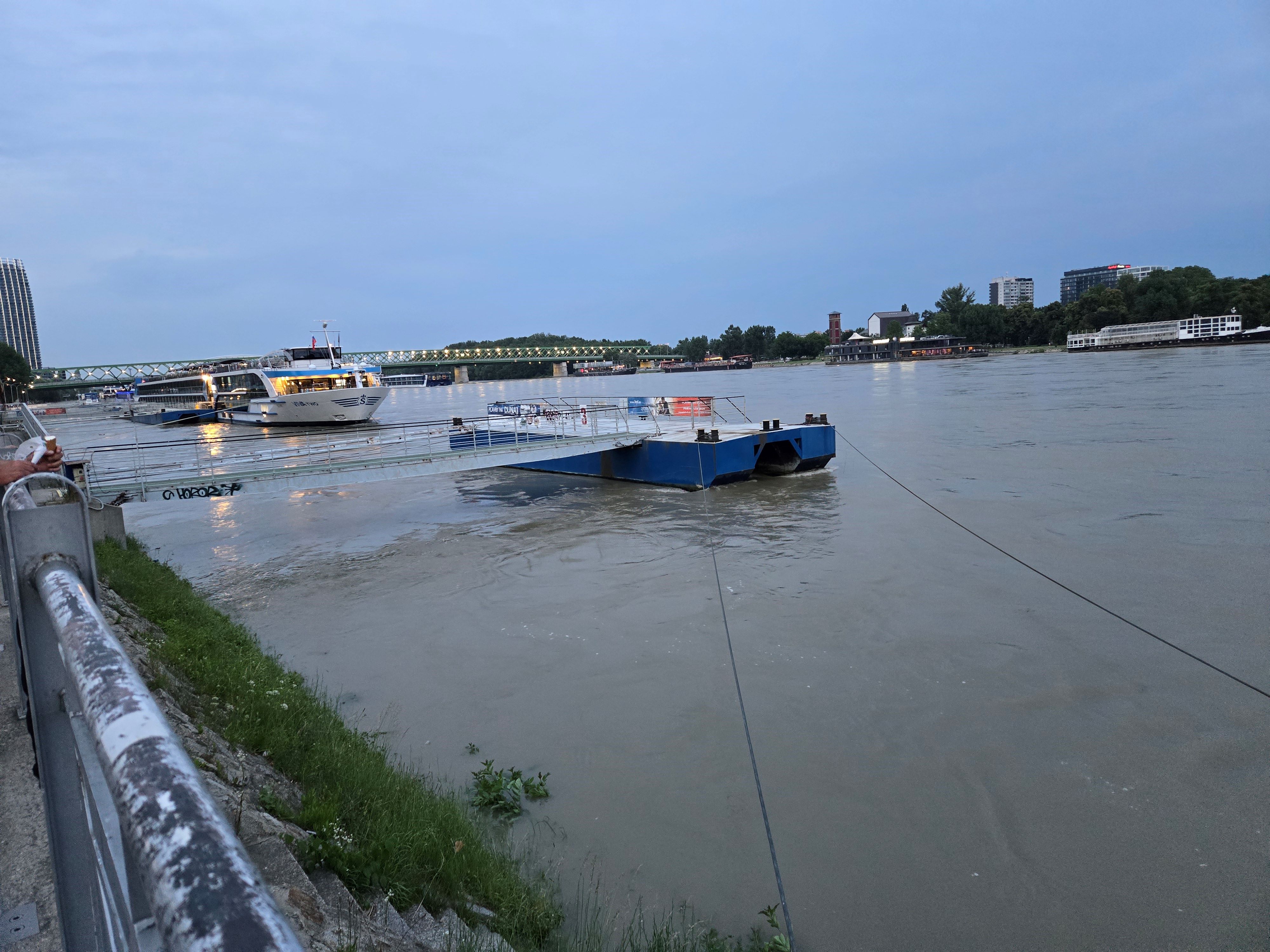
Slovakia is one of the 10 Central/Eastern European countries through which the important Danube river passes. In fact, Bratislava is one of the typical stops on a multi-day Danube river cruise.
Bratislava’s placement along the Danube also means that it has a nice river walk. I recommend strolling along its riverwalk, especially at dusk. You can watch the sunset as the lights start to light up the riverbank.
There are also some statues and monuments along and next to the river walk that you can appreciate. For example, the statue of Ludovit Stur who is credited with popularizing the Slovak language, is in a square next to the river.
You’ll also see a lot of the Danube cruises parked here in the evening, which can give you a glimpse into what a European river cruise might be like.
See the UFO Tower
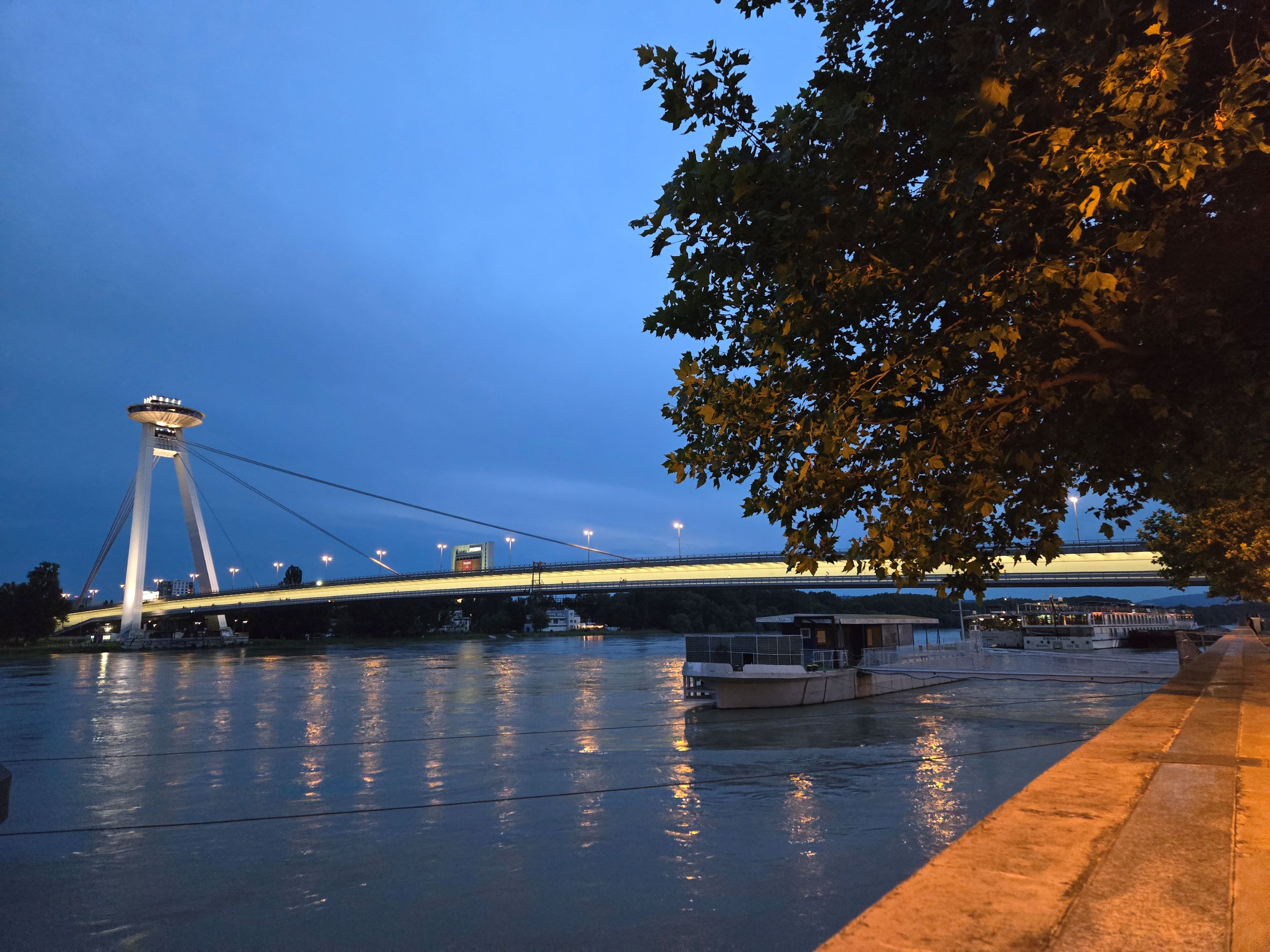
Rising up from the Slovak National Uprising (SNP) Bridge is Bratislava’s iconic UFO Tower. Construction on this tower began in the late 1960s and has since become a symbol of Bratislava.
I enjoyed just seeing the UFO Tower rising above the historic medieval and baroque architecture. A true comparison of modern and historic designs. However, you can also take an elevator to the top of the tower and enjoy its observation deck.
The tower rises about 95 meters (~312 feet) above the city, and its observation deck offers what I’m sure is a lovely panoramic view of the city. I decided to skip the observation deck as I’d already splurged on an top-floor Airbnb with a rooftop balcony. However, it costs just under 12 euros to take the elevator up to the deck. If you choose to dine at its panoramic restaurant, the bill subtracts this cost.
Taste Slovakian Wines
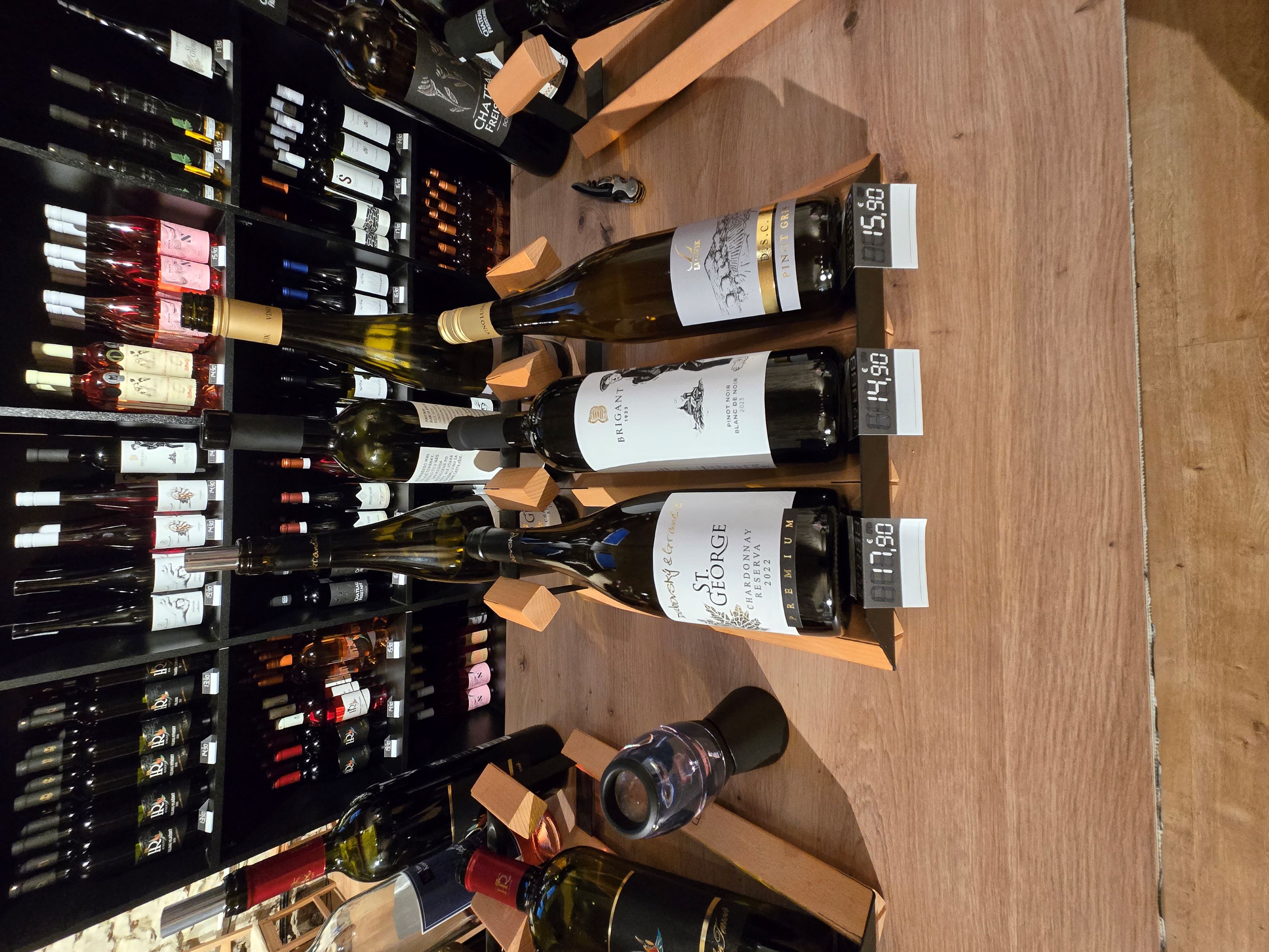
As I was walking through Bratislava’s Old Town, admiring the historic buildings, a sign caught my eye. “Free wine tasting!” it promised, with an arrow pointing through an archway.
Now I love free and I love wine and I love tasting. I especially love wine tasting in different countries where I can try new and unusual grapes and production methods that I wouldn’t get in the US.
So I followed the arrow through the archway, down some stairs and into a wine cellar where nine wines were waiting. I thought I’d enjoy the tasting, but I didn’t know just how good Slovakian wine is!
The man explained that the first three tastes were free, then if I wanted to continue and taste all the remaining six, it’d be 10 euros. After the first three tastes, I knew that was a steal and so tried all nine wines plus bought a bottle.
I won’t pretend to be a sommelier, but I’ve had many different wines from around the world. That includes multiple trips to wineries in the world-famous Napa Valley. And the Slovakian wines I had could stand next to any of the very expensive wines I’ve tried in Napa – at about a 10th of the price (or less).
The man who led the wine tasting explained that all Slovakian wine comes from very small family vineyards across the country that do not produce many bottles per year. Therefore, it is quite difficult to find quality Slovakian wine outside of Slovakia. So if you’re in Bratislava and enjoy wine, don’t miss doing a tasting.
Tour the Bratislava Castle Complex
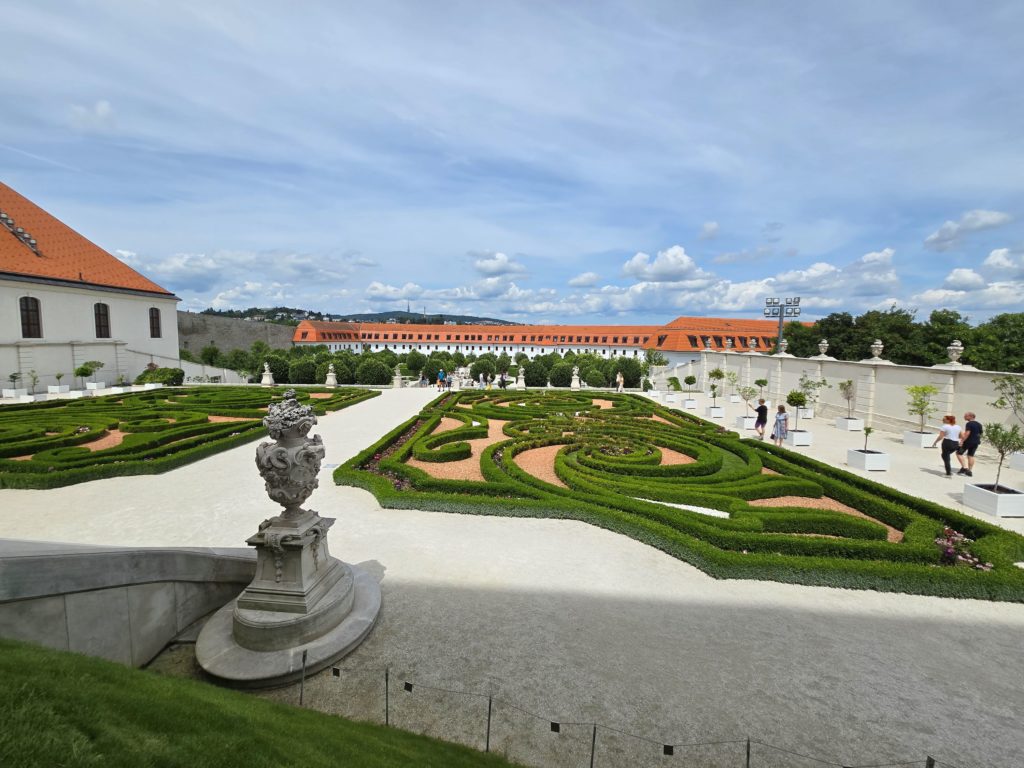
The Bratislava Castle is visible from most vantage points in the city center. It sits atop a high hill overlooking the Old Town, surrounded by fortifications. The castle was founded in the 9th century, but has been renovated several times in the centuries since.
The castle itself is a giant rectangular building with four towers at each corner. It also has a courtyard, monuments and beautiful baroque-style gardens. It is free to enter the castle complex, including the courtyard and gardens. Inside the castle, you’ll find the Slovak National Museum, which charges a fee to enter.
You will have to climb a cobble-stone paved hill to get to this castle. I recommend entering the castle complex through the beautiful ornate Vienna gate. Make sure to find the Witch statue outside the castle complex.
Once inside, take time to admire the views of Bratislava sprawling out below you, from the Old Town to the suburbs. Then, spend the rest of your time moseying through the immaculate baroque gardens. They reminded me a bit of a mini Versailles.
Climb to the Slavin Monument
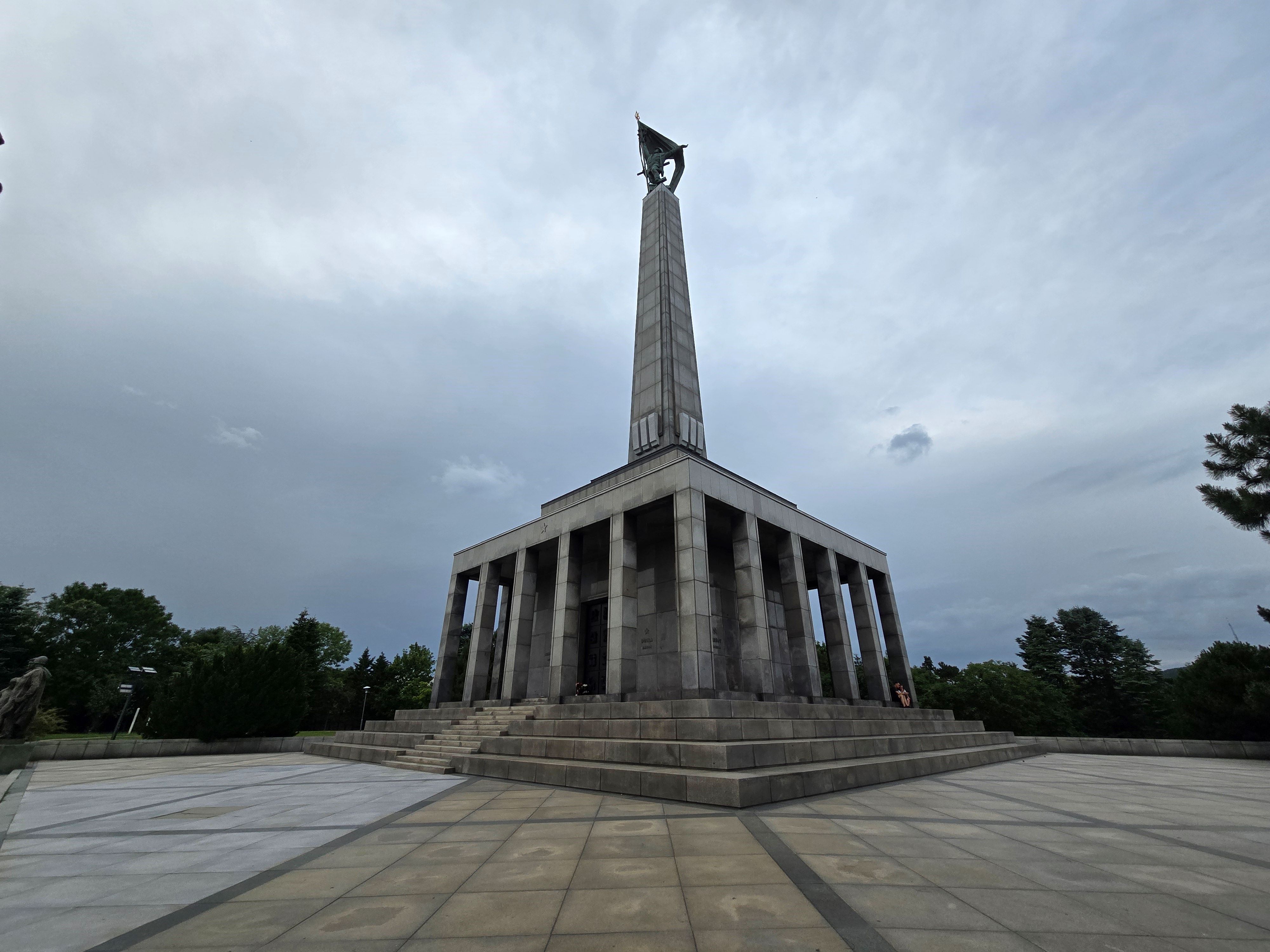
After spending over a month in former Soviet satellite states in Central Europe, I’ve learned that the countries tend to have a complicated relationship with the former Soviet Union. Bratislava is no different.
One testament to this complicated history is the Slavin Monument. The Slavin Monument sits atop one of the highest hills in Bratislava, You can see it from many points in the city. It is both a monument to the Soviet soldiers who helped to free Slovakia from German occupation at the end of WWII, as well as a military burial ground.
Of the monuments I’ve seen in Central Europe with this background, the Slavin Monument in Bratislava is the most impressive. In the center is a 42-meter (~138-foot) tall obelisk topped with a 12.5-meter (~41-foot) tall soldier holding a flag in one hand and crushing a swastika under his boot. Inscribed on the monument are the Slovakian cities and dates of liberation.
Mass graves of the Soviet soldiers and tombstones for each person who fell in battle surround the monument.
Because the statue is up so high above the city, it also offers one of the best views of Bratislava. But know that it is a bit of a climb to get to the top, so wear comfortable shoes.
Learn Slovakian History at the Old Town Hall Museum
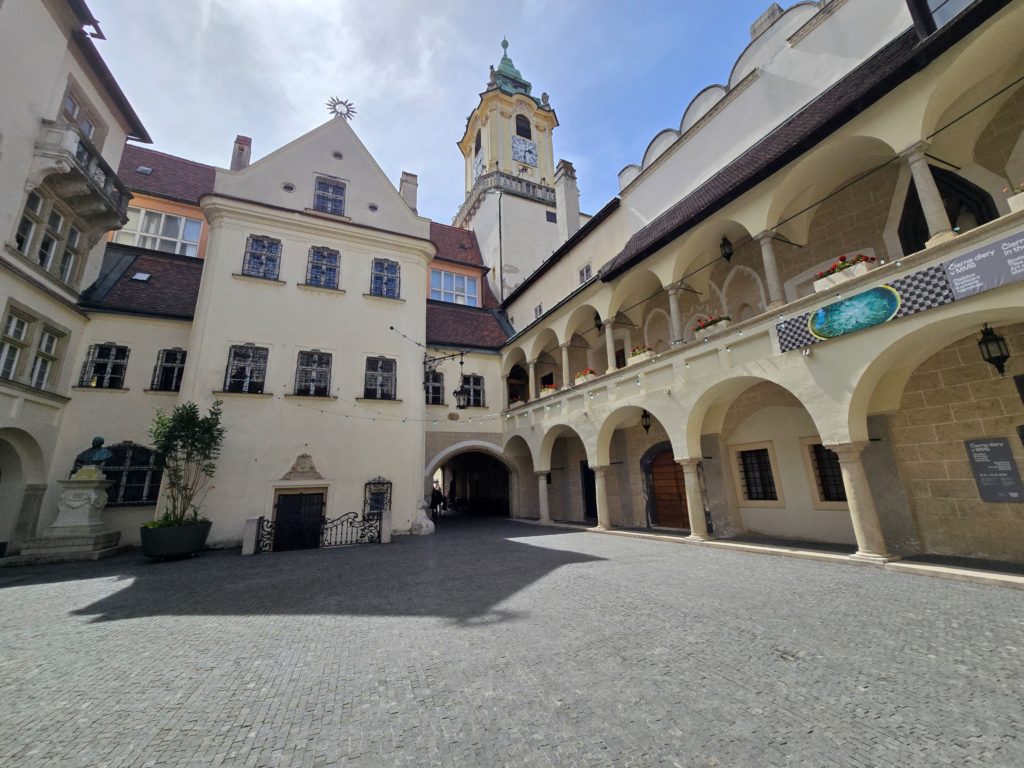
On my second day in Bratislava, I felt that I hadn’t learned enough Slovakian history. So I decided to pay a visit to the Old Town Hall Museum. And boy did it really, really deliver.
If you’re going to visit this museum – and I certainly recommend it as a top thing to do in Bratislava – plan to spend three hours at minimum. The museum takes you through Slovakian history essentially from nearly the start of Bratislava’s founding to almost present-day. With only an 8 euro ticket, you also have access to the old clock tower and any temporary exhibits.
The museum is in Bratislava’s historic former town hall, in the heart of the Old Town. Some of its artifacts date back to the 2nd century! Though its most thorough historical accounts start from the 11th century. You can walk through and learn about Bratislava and Slovakia’s evolution and importance throughout several centuries. One of my favorite parts of the permanent exhibits was seeing how the coat of arms changed between centuries.
When I visited, there was also a temporary exhibit called “Communism with a Human Face” that discussed the communist era in Bratislava and greater Czechoslovakia. It particularly focused on the revolutionary times of the 1960s when attitudes began to shift.
Before leaving, I paid a visit to the former jails and the ice pits beneath the town hall. I learned the giant ice pits cooled the building in the summer. The more you know!
Appreciate the Blue Church
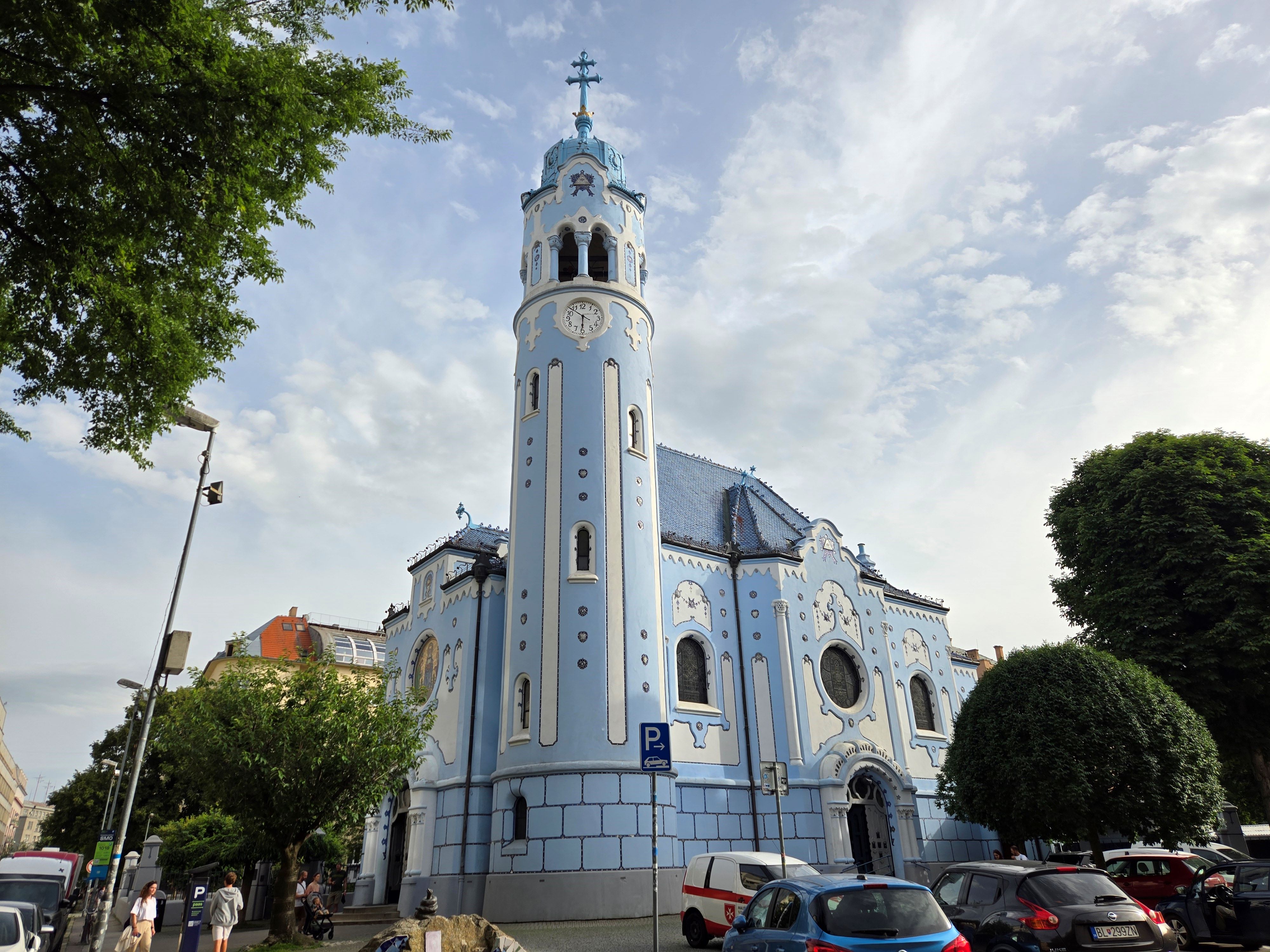
Another Bratislava icon you must see is the famous Blue Church. Paying a visit to this church is one of the top things to do in Bratislava for good reason, even if it only takes a few minutes.
The Blue Church – officially, the Church of St. Elisabeth – is a Catholic church that was originally the school chapel for the neighboring high school. It has gained notoriety due to its pastel-blue exterior and blue-tiled roof. While it may not sound like much, the church is absolutely beautiful and really interesting to study from up-close.
Find the “Man at Work”
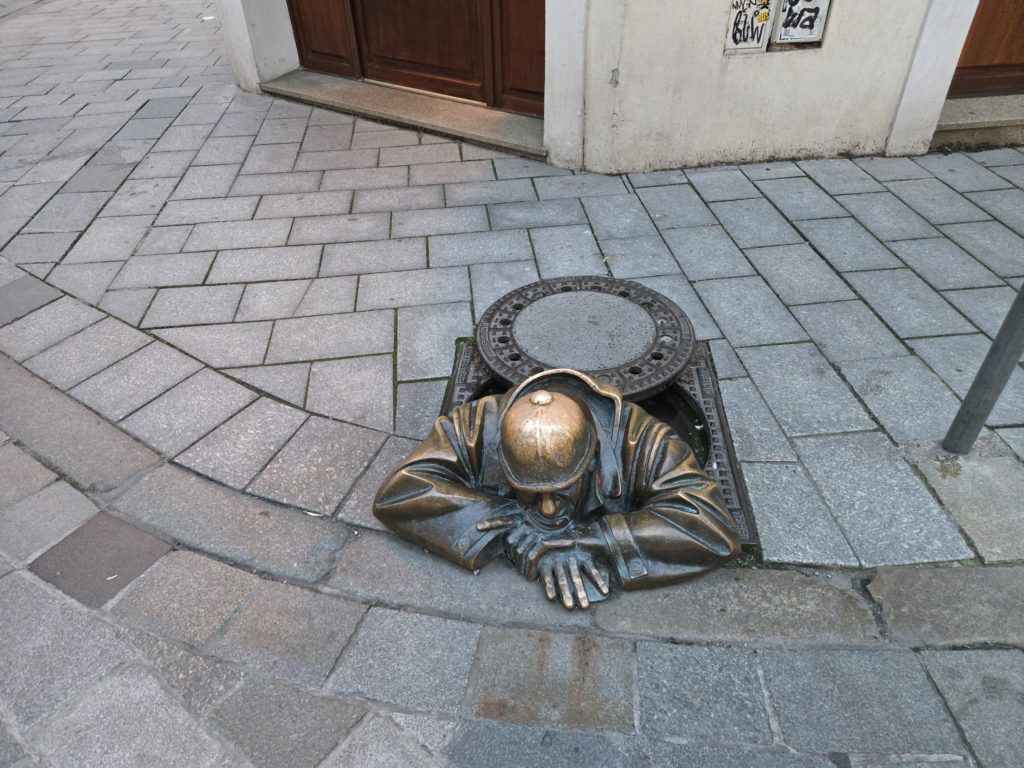
The “Man at Work” is another Bratislava icon. In a city full of statues that are both historic and quirky, this one is perhaps its most famous. It is one of the many quirky statues that popped up in Bratislava’s post-communist era in the late 1990s by a famous Slovakian artist.
The statue, officially named “Cumil” (“Watcher” in Slovakian), features a man popping his head out of a manhole cover. He dons a hard hat and a jacket and rests his head on his hands with a slight smile on his face.
No one quite knows the meaning of what the man is doing – it’s up to your interpretation. You can find him lurking around the Old Town. Look for some other quirky statues by the same artist while you’re at it!
Try the famous Slovakian Dish Bryndzove Halusky
Bryndzove Halusky is a famous Slovakian dish made with potato dumplings (noodles) and sheep’s cheese. It is often topped with crispy bacon or lard.
According to my research, Byndzove Halusky is more popular in eastern Slovakia, but it is still served in many restaurants with traditional Slovakian cuisine throughout Bratislava. If Bratislava is your only stop in Slovakia, you should give it a try!
For full transparency, I only tried a small bite of my partner’s dish because I don’t really like cheese. It tasted like a typical cheesy pasta dish to me – so I’m sure you’ll enjoy it if you like that kind of thing.
My partner did say it was a bit heavy, and one bowl was perhaps too much for one person to eat by themselves. But he was glad he tried it.
Additional Things to do in Bratislava if You Have More Time:
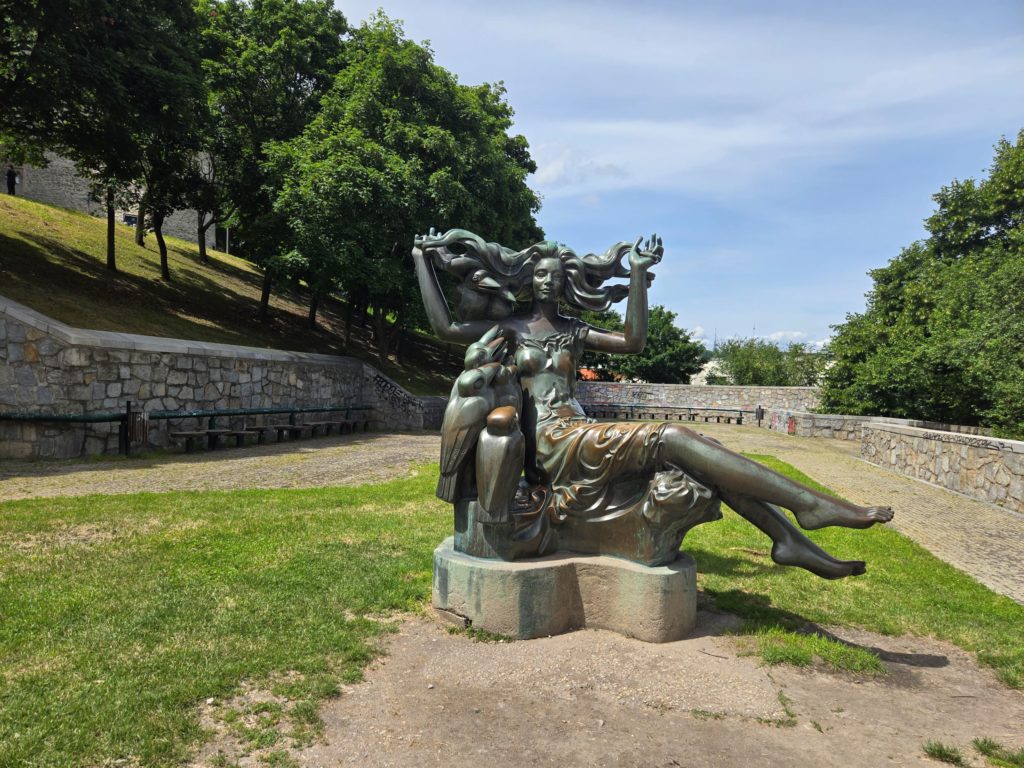
If you’re spending more than a couple of days in Slovakia’s capital, or just looking for alternatives to my recommendations, here are some more things to do in Bratislava.
- Danubiana Meulensteen Art Museum: This large modern art museum and sculpture garden sits on a plot of land stretching out onto the Danube. I didn’t have time to visit during my short stay, but this museum would be one of my stops if I returned.
- Old Market Hall: This historical hall was originally built in 1910 and has since been restored. It still functions as a farmers market where you can shop, eat street food and attend events.
- Primacial Palace: This 18th century palace is now a mayor’s office, but you can still visit it to admire its historic tapestries and statues.
- Presidential Palace: Similarly, the presidential palace is the current home and offices of the Slovakian president. It also features gardens and a fountain with an earth statue. When I visited, it was temporarily closed to the public, but I believe it was due to reopen.
- Devin Castle: Hrad Devin is a partially restored Medieval castle that looks out over the Danube. I didn’t have time to visit as it’s a bit outside of the city, but you can get there by car in about 20 minutes or public transit in about 40 minutes if you have more time to visit.
Logistics:
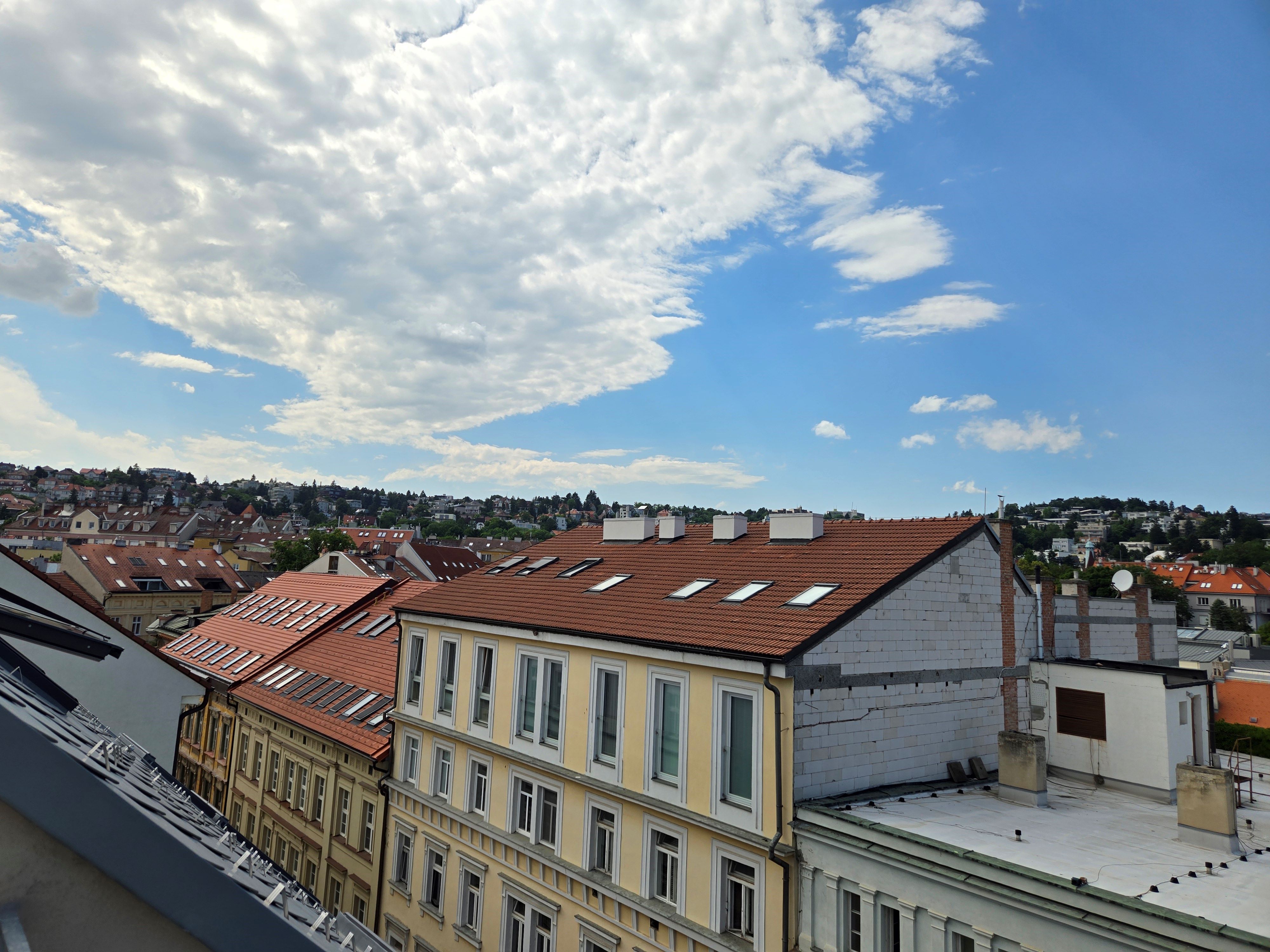
Where to Stay:
If you’re visiting Bratislava for just a short period of time, I recommend staying close to the Old Town. The Old Town is small, so you have essentially two options:
- Stay in the Old Town: Within the walls of the historic Old Town, you’ll find hotels and hostels. Staying here puts you in the center of the top things to do in Bratislava. However, you’ll face more crowds, noise and cost.
- Stay just outside of the Old Town: There are a lot of options for hotels, hostels and Airbnbs within a few minutes’ walk of the Old Town. I chose this location for the fewer crowds, better cost ratio and higher chance of finding more local restaurants near me.
Getting Around
Bratislava is not a large city, and so it is quite walkable. If you want or need public transit, there are trams and buses that run through the city as well. I don’t think a car is necessary.
Safety
Bratislava is considered a very safe city, and one of the safest European capitals. However, it’s always important to be aware of your surroundings and keep your things secured from potential pickpockets. This advice is especially true for more crowded areas like the Old Town.
Are you planning a trip to Bratislava? Feel free to reach out and ask me any questions!
Pin this post to save it for later.

